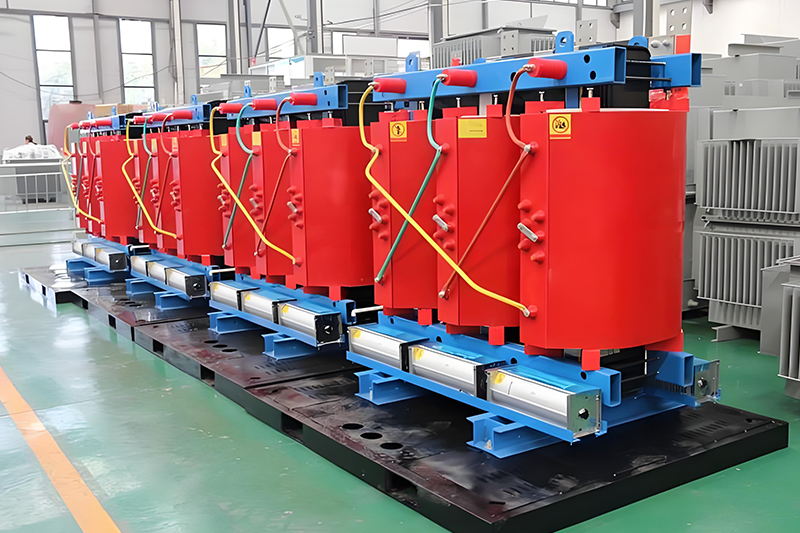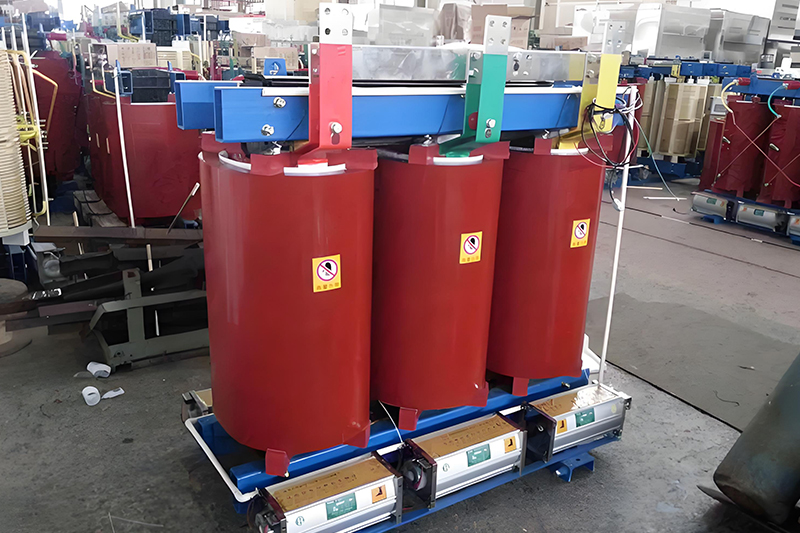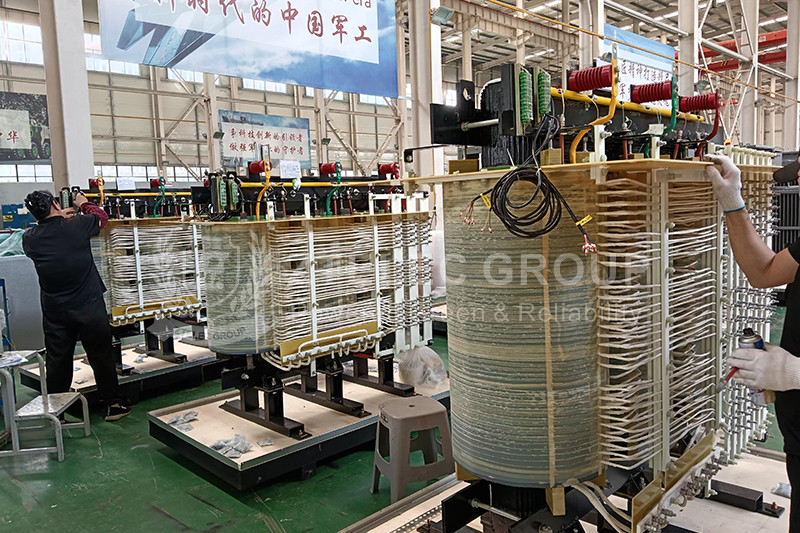How Do Dry-Type Transformers Dissipate Heat Under Extreme High Temperatures?
Dry-type transformers are widely used in power transmission and distribution systems due to their safety, environmental protection, and minimal maintenance. However, under extreme high-temperature environments, their ability to dissipate heat becomes a key factor in determining operational reliability. While these transformers won’t explode due to heat alone, excessive temperature can seriously degrade their performance and lifespan, potentially leading to safety hazards such as insulation failure or fire. This article explores the key risks and advanced cooling methods that enable dry-type transformers to maintain performance in harsh thermal environments.

Risks of Transformer Overheating in High-Temperature Environments
1. Accelerated Equipment Aging
High temperatures significantly accelerate the aging of insulation materials used in transformers. As insulation deteriorates, electrical strength decreases and the likelihood of faults increases. If heat is not properly dissipated, the coil temperature will continue to rise, potentially causing the windings to burn and even leading to fire hazards. Unlike oil-immersed transformers, which rely on oil for thermal conduction, dry-type transformers depend heavily on air-based convection and enhanced cooling design.
2. Insulation Degradation
Heat reduces the electrical resistance of insulation, increasing leakage currents and the risk of short circuits. Extended exposure to high temperatures can drastically shorten the transformer’s insulation life, directly impacting the stability and safety of long-term operation.
3. Safety Hazards
Overheating does not only affect the internal transformer components—it can also endanger surrounding infrastructure. Burned windings or hot surfaces can cause fires, especially in closed rooms or environments with poor airflow and dust accumulation.
Effective Cooling Solutions for Dry-Type Transformers
1. Environmental Ventilation Enhancements
Forced Ventilation Systems: Install axial or centrifugal fans in transformer rooms to boost air exchange. Properly placed industrial fans enhance natural convection and reduce thermal buildup around the unit.
Optimized Air Duct Design: Use vertical air ducts with bottom inlets and top outlets. This setup promotes hot air rise and cold air intake, maintaining a consistent airflow pattern. Ensure inlet areas are larger than outlets to prevent recirculation and dead zones.
Deflector Plates: Install metal deflectors near high-temperature components to guide cold air directly over the hottest areas of the transformer, improving targeted heat removal.

2. Auxiliary Cooling Equipment
Smart Temperature Control Systems: Equip transformers with intelligent temperature monitoring sensors and variable-speed fans. When winding temperatures exceed preset thresholds, forced cooling is automatically activated to maintain safe limits.
Water-Cooled Radiators: For high-capacity dry-type transformers, external water-cooled plates can help extract heat. This method is efficient but requires condensation prevention systems to avoid electrical risks.
Phase Change Materials (PCM): Embed PCM in the transformer cabinet walls. These materials absorb large amounts of latent heat when changing phase (e.g., solid to liquid), helping to delay temperature spikes and giving time for mechanical cooling to activate.
3. Transformer Structural Optimization
Open-Airway Winding Design: Use windings with structured air gaps and specialized insulation. Compared to traditional wrapped coils, this configuration increases the exposed surface area, improving airflow and thermal conduction.
Heat Sink Integration: Add aluminum or copper fins to the transformer core’s outer shell. These increase surface area and support faster heat loss through natural convection.
Core Material Upgrades: Adopt low-loss magnetic steel or amorphous alloys to reduce core losses. A lower heat generation at the source reduces the demand on the cooling system and lowers overall transformer operating temperatures.
4. Operational Management Practices
Load Adjustment: In extreme temperatures, derate the transformer in accordance with IEC or ANSI guidelines. Operating below full load reduces internal heating and preserves insulation life.
Infrared Thermal Monitoring: Regularly conduct thermal imaging inspections to identify local overheating, allowing for early detection of coil hotspots or poor airflow regions.
Routine Cleaning and Maintenance: Dust buildup inside ventilation channels can act as an insulator. Periodic cleaning is essential in dusty or industrial environments to ensure airflow is unobstructed.
Managing heat dissipation in dry-type transformers under extreme high temperatures is a multi-dimensional challenge. It requires a combination of smart environmental design, advanced cooling technologies, structural optimization, and effective operational practices. By adopting these methods, utility companies and industrial users can significantly improve the safety, reliability, and lifespan of their dry-type transformers—even in the most demanding climates.
For mission-critical facilities operating in high-temperature regions, investing in intelligent transformer cooling systems is not just a technical upgrade—it’s a strategic decision for long-term operational security.
- more+releated article
- 2025-10-21Application of K Factor Transformer
- 2025-10-21Detailed explanation about transformer model w
- 2025-10-2010kV Oil-Immersed Transformer Safety: Lightnin
- 2025-10-20What are The Advantages of Phenolic Cotton Clo
- 2025-10-17Are Three-Phase Isolation Dry-Type Transformer
- 2025-10-17G10 Epoxy Sheet: Choosing the Right Specificat
- 2025-10-1610kV Oil-Immersed Transformer Operation Inspec
- 2025-10-163240-B Epoxy Phenolic Glass Fiber Cloth Lamina
- 2025-10-15G10 Epoxy Sheet: The Preferred Insulation Mate
- 2025-10-15Analysis of Energy-Saving and Noise Control Te





